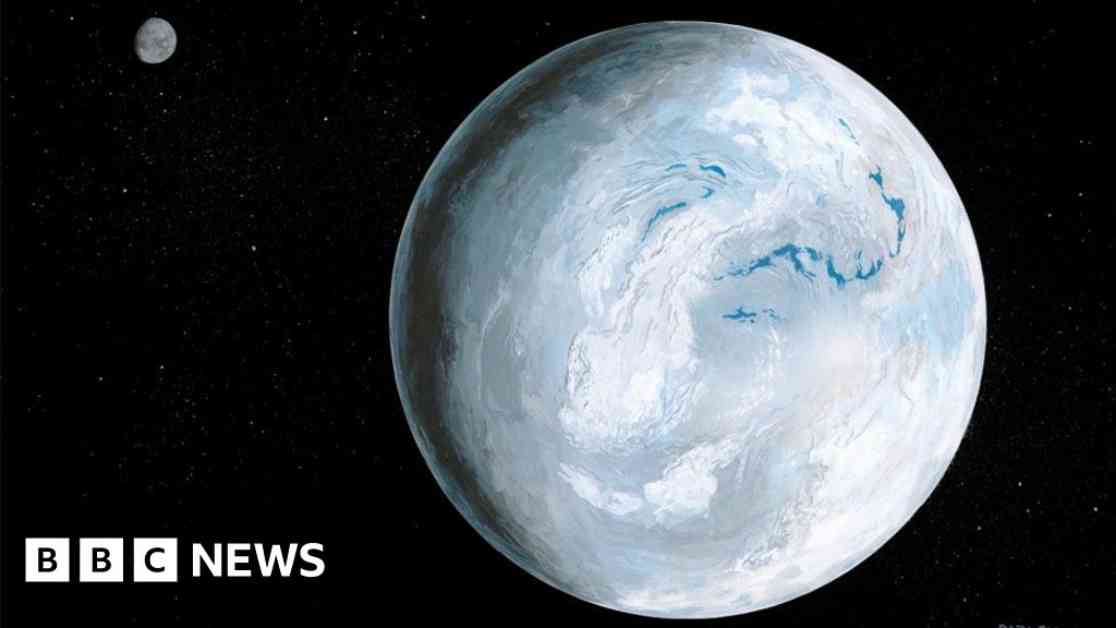The Mystery of Snowball Earth Unraveled by Scottish Isles
A cluster of Scottish islands off the west coast of Scotland has emerged as a key player in solving one of the planet’s greatest mysteries – the phenomenon known as “Snowball Earth.” Researchers from UCLA have discovered that the Garvellach islands provide the best record of Earth entering its biggest ice age around 720 million years ago. This significant discovery has the potential to shed light on why our planet underwent such extreme icy conditions for nearly 80 million years and how it paved the way for the emergence of complex life forms.
The term “Snowball Earth” refers to a period in Earth’s history when the planet was almost entirely covered in ice in two phases. This global glaciation event is believed to have set the stage for the evolution of the first animal life on Earth. While clues about this icy period have been erased in most parts of the world due to erosion, the Garvellach islands have miraculously preserved evidence of this critical time in Earth’s history. Researchers are hopeful that studying the geological formations on these islands will provide insights into the factors that led to such extreme climatic conditions and the subsequent rise of complex life forms.
Uncovering the Geological Secrets of the Garvellach Islands
The Garvellach islands, nestled in the Inner Hebrides of Scotland, offer a unique opportunity to study Earth’s ancient past. These uninhabited islands hold a treasure trove of geological information that has remained untouched for millions of years. The rock layers on the islands serve as a time capsule, preserving the history of Earth’s transition into the largest and most severe ice age in its history.
One of the key findings of a recent study conducted by researchers at University College London is that the Garvellachs have managed to escape the erosive forces that wiped out crucial geological records in other parts of the world. The islands present a rare opportunity to piece together the puzzle of Snowball Earth and understand the conditions that led to the emergence of life on our planet. By examining the rock layers on the Garvellachs, scientists hope to unravel the mysteries of Earth’s deep freeze and its implications for the evolution of complex life forms.
Lead researcher Prof. Graham Shields of University College London highlighted the significance of the Garvellach islands in capturing the moment when Earth entered an ice age. He emphasized that these islands provide a detailed record of a critical period in Earth’s history that is missing in other parts of the world. The layers of rock on the Garvellachs offer a unique glimpse into the past, allowing scientists to reconstruct the environmental conditions that shaped our planet millions of years ago.
The Race for the Golden Spike: A Milestone in Geological Research
The discovery of the intact rock formations on the Garvellach islands has sparked excitement in the scientific community, leading to discussions about the possibility of designating the islands as a site for the prestigious golden spike. The golden spike is a symbolic marker hammered into locations that represent significant geological events, making them key reference points for researchers studying Earth’s history.
Elias Rugen, a PhD student at University College London, played a pivotal role in uncovering the geological secrets of the Garvellach islands. His research, published in the Journal of the Geological Society of London, has drawn attention to the unique geological features of the islands that make them a prime candidate for the golden spike. Rugen’s meticulous dating of the rock layers and identification of the critical period missing from other geological formations have positioned the Garvellachs as a front-runner for this prestigious accolade.
The process of selecting a site for the golden spike involves thorough evaluation by experts in the field, known as the “Cryogenian sub-commission.” These experts have been taken to the Garvellachs to witness firsthand the geological wonders of the islands and assess their suitability for the golden spike designation. If the islands are chosen as the final location for the golden spike, it would mark a significant milestone in geological research and elevate the scientific profile of the Garvellach islands.
Dr. Tony Spencer, a pioneering researcher who recognized the significance of the Garvellach formations six decades ago, expressed his excitement at the prospect of the islands being awarded the golden spike. He emphasized the unique geological attributes of the Garvellachs, including the thickness of the rock layers and the continuity of sedimentation, which make them an ideal candidate for commemorating the onset of the Snowball Earth period.
In conclusion, the Garvellach islands represent a valuable resource for unlocking the secrets of Snowball Earth and understanding the complex interplay of geological forces that shaped our planet millions of years ago. By studying the rock formations on these islands, researchers are poised to make groundbreaking discoveries that could reshape our understanding of Earth’s history and evolution. The potential designation of the Garvellachs as a site for the golden spike would not only honor their geological significance but also pave the way for future research and exploration in this unique geological setting.


